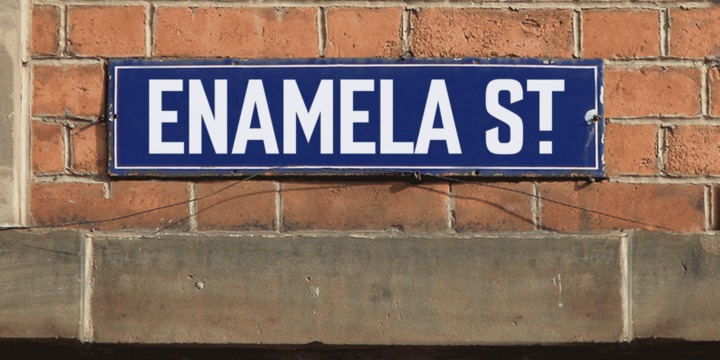Enamela We are and so proud to introduce our very best font to you. This Enamela is the successful outcomes of our company trial regarding font invention that will satisfy the customer and provide the better result in comparison with any font in the marketplace nowadays.
Not only the fact it is the high quality solution from high quality graphic that can generate the enjoy outcome from our corporation lab but the feedback from our real users of this Enamela are also just as by being the good feedback.
Our website is offered to provide the full information details for you 1 day per day so that you can appreciate seeking for the information prior to decision to use your Enamela . Not only the elegant information about the font on our website is provides but the reviews from authentic users are seemed on internet to give genuine feedback from real users about our own Enamela .
This is valuable to suit your needs because it can help you to produce decision to use each of our Enamela or not and it’s the true feedback from real users with no adjusting or making up in the positive feedback. Don’t wait to try our important font and you will understand why we recommend it to you.
Download Enamela Font Family Now
ENAMELA (rhymes with Pamela) is based on condensed sans serif lettering found on vitreous enamel signage dating from the Victorian era and widely used in Britain for road signs, Post Office signs, the plates on James Ludlow wall postboxes, railway signs and direction signs, as well as for circular Automobile Association wayfinding plaques throughout the first half of the twentieth century. In addition to the Medium and Bold weights found on old enamel signs, a new Regular weight and the addition of a convincingly classic lowercase to match the original capitals, make Enamela Condensed a flexible and highly usable typeface. Each weight has a complementary and complimentary faux italic. More The roots of the lettering date back to Victorian times; a Cherry Blossom Boot Polish enamel advertising sign on the Advertising Antiques website is estimated to date from 1880. Between 1908 and 1915 the lettering was used on bulls eye station signs for the London Underground up to the introduction of Johnstons Underground type. I initially saw a similarity to the Charles Wright car registration plate font (see K-Type Mandatory) with its quirky terminals stemming from the compression of geometric type. Alan Brignull noted the similarity to a Victorian wood type called Runic, though the terminals on C, G, J and S slope in the opposite direction. The precise origin and identity of the typeface continues to prove elusive. In search of an existing digital font, I sought the help of Luc Devroye in Montreal who identified the closest match as Czech designer Frantiek Storms Enamelplate D, similarly condensed with the correctly sloping terminals. However, many characters differ substantially from those in local source material, perhaps indicating that continental European enamel lettering varied from its British counterpart, though even in Britain a fair degree of variation can be observed, draughtsmen evidently feeling free to amend the basic letter shapes and exercise individual taste. The middle diagonals of an uppercase M usually extended down to the baseline, becoming rather heavy and congested, but some draughtsmen started following the Gill /Johnston example of a higher pointed vertex, and this more elegant option has been chosen for the new Enamela typeface, though the alternative M with lower vertex is also provided at the Alt-M () keystroke on a Mac, or Alt-0181 on Windows. While some designers preferred a plain vertical throat on the G, others added a crosspiece to help distinguish it from a C, and the latter is the form chosen for the Enamela fonts. However, the G without the horizontal is also present, assigned Unicode FF27 (full width capital G).
